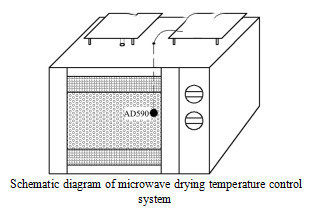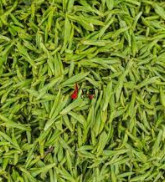
- Shandong Microwave Machinery Co.,Ltd.
- To be the Leader of microwave drying and edible oil refining equipments Manufacturer
Home> Company News> Research status of tea drying technology
- AddressNo. 225, Huangqiao Village, Beiyuan, Tianqiao District, Jinan, Shandong, China
- Factory AddressNo. 225, Huangqiao Village, Beiyuan, Tianqiao District, Jinan, Shandong, China
- Phone(Working Time)+86 0531 85064681
- Phone(Nonworking Time)0086-15020017267
- Fax+ 86 0531 85064682
Research status of tea drying technology
2019-01-02 10:06:03
Absrtact: Drying, as an important process of tea preliminary processing, is of great significance to the formation of sensory quality of tea. During the drying process, under the action of heat and force, with the continuous loss of water, the physical characteristics and internal substance components of the processed products change dramatically, thus forming the unique sensory quality of tea.

This paper expounds the principles and characteristics of various drying technologies for primary tea production in China, points out the trend that microwave drying equipment will develop from single technology to combined application technology, and points out that the basic research of new combined drying technology and on-line detection technology of moisture content in drying products should be improved, which will provide some development ideas for the research and development of new tea drying machinery and future tea drying technology.
Key words: tea microwave drying; drying principle; single drying; combined drying; on-line detection

Drying is the key process of tea preliminary production, which removes excess moisture and forms different sensory qualities of tea. In recent years, with the increase of consumers'health awareness, tea processing technology has developed towards green environmental protection, low consumption and energy saving. The traditional energy processing such as coal and wood can not meet the development requirements of tea cleanliness, standardization, continuity and even intellectualization.
Therefore, on the premise of guaranteeing the maximum retention of tea active ingredients and developing sensory quality, and on the basis of traditional drying technology and principle research, scholars try to use advanced drying technology of fruit, vegetable, grain and other agricultural products for reference, in order to explore the optimal effect of tea processing and drying.
In this paper, the author summarized the research status of tea primary processing drying technology, and pointed out the shortcomings and development direction of existing research, aiming at promoting the development of tea processing drying technology, providing reference for the improvement of tea product quality and the future research and development of tea drying technology and equipment.
At present, the application of single drying technology in tea field has been widely studied and applied, but the new combined drying technology is still in its infancy, and a few studies are only in the stage of component research and parameter exploration of some equipment. So far, no systematic research system has been formed, especially the research on drying mechanism is still in a blank state.
Taking vacuum freeze-drying as an example, the moisture content of tea stem, bud and leaf is different due to the difference of raw material grade and the mechanical composition of the same raw material. Therefore, it is necessary to determine the appropriate material pre-freezing temperature before vacuum freeze-drying. The pre-freezing temperature and sublimation temperature of the material can be set accurately only when the eutectic point, co-melting point and glass transition temperature are determined. It is a key control point to control the quality stability of dry products.
It can not only control the end of the freezing process more accurately, but also reduce the energy consumption and shorten the freeze-drying cycle. Therefore, it is necessary to improve the detection of eutectic point, eutectic point and glass transition temperature of materials in order to achieve the purpose of optimizing quality and saving energy consumption.
In addition, some new drying technologies, such as high-voltage pulsed electric field (HPEF) combined with vacuum freeze-drying technology, microwave combined vacuum freeze-drying technology, radio frequency-hot air combined drying technology, have been widely studied in the food industry, which also provides a potential research direction for the new drying technology of tea.
 High efficiency food beverage factory stone paper production line
High efficiency food beverage factory stone paper production line Factory price Fully automatic Machine PP/PS Plastic Sheet Production Line
Factory price Fully automatic Machine PP/PS Plastic Sheet Production Line used deformered bar rolling mill production line
used deformered bar rolling mill production line Manufacturing plant automatic factory puffed sticky rice cracker production line
Manufacturing plant automatic factory puffed sticky rice cracker production line Production Line Pp Ppr Plastic Pipe Making Machine 20-63mm Multi-layer Extrusion Production Line For Water Supply
Production Line Pp Ppr Plastic Pipe Making Machine 20-63mm Multi-layer Extrusion Production Line For Water Supply